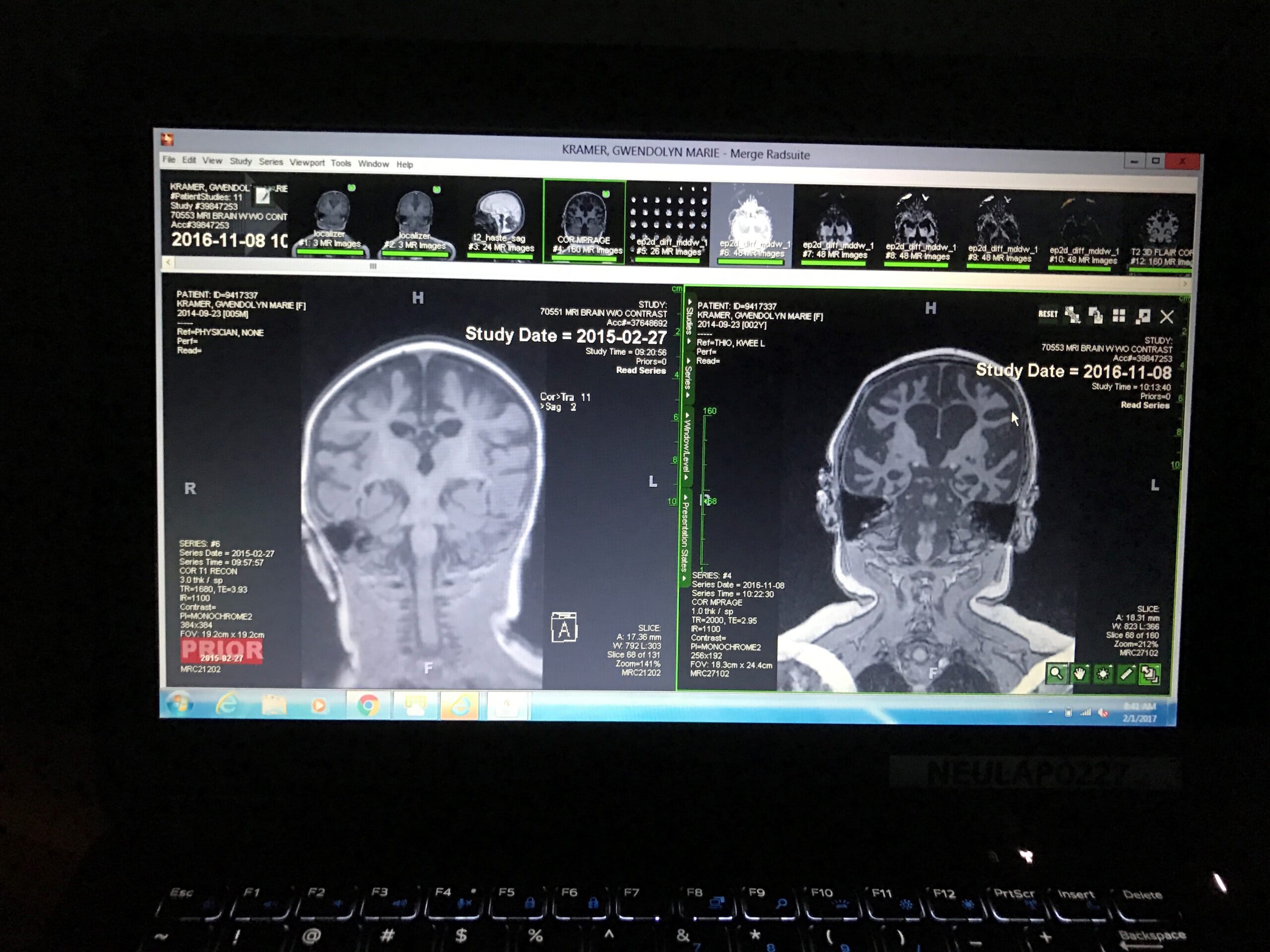
My daughter, Gwen, was five months old when she had a brain MRI that diagnosed her with severe neurological abnormalities. Because her MRI findings were so rare, the medical team could not give us much information regarding her future. We left the hospital being told “she could have mild delays or this could be terminal.”
The next year was filled with constant tests, appointments with specialists, ever-changing medications, tracking seizures, surgery for a feeding tube, weekly therapy appointments, and endless FEAR.
How do you wrap your mind around “could be a mild delay or could be terminal?” The “what-ifs” were 24/7. The fear of the unknown was crippling to both our head and heart.
Following her second birthday, a repeat MRI was completed to take another look at her brain. She had not made a lot of progress over the last 18 months, but she also had not regressed. Because of this, we entered the MRI with a realistic mind-set. Our prayer was for spontaneous brain recovery but we knew that was probably not going to be the case. However, we kept reminding ourselves “stable is good- she’s not getting any worse.”
The next day, our world came crashing down when we received the phone call to discuss the results.
The doctor said, “it’s profound. The MRI shows tissue loss across all areas of the brain.” Essentially, “profound” is the worst terminology in describing severity. The results were so severe – much of her brain that was there before was no longer. At this time, her condition was switched to “terminal with no cure.”

At 2 years of age, our daughter was admitted to the Pediatric Palliative/Hospice Care Program.
Her condition was still considered rare, complex, and unknown. We continued to have zero answers, zero chance at a cure, and we were completely shattered.
About a month later, we had a neurology appointment and they asked if we wanted to see the MRI images in person. Reluctantly, we agreed.
Mentally, I anticipated I would feel immense heartache again. I was prepared to gasp in disbelief of visually seeing my daughter’s disappearing brain. I tightened my throat to hold back the ugly tears to the best of my ability.
As expected, I gasped when I saw the images. But for a very unexpected reason.
Yes, her brain was missing. But in its absence, a heart had formed. A HEART was the center and base of my daughter’s brain.
Today, Gwen is 8 years old. She has never had a brain MRI again as her medical team fears she is not strong enough to go under anesthesia unless absolutely needed. Therefore, we do not know the current status of her brain. Based on her continued decline, we know the results would not be good.
“My daughter is 8 years old.” I shouldn’t be able to say that statement. And I am thankful everyday that I am able to say that statement.
This disease is absolutely brutal. But my daughter has proven to be an unbelievable fighter.

